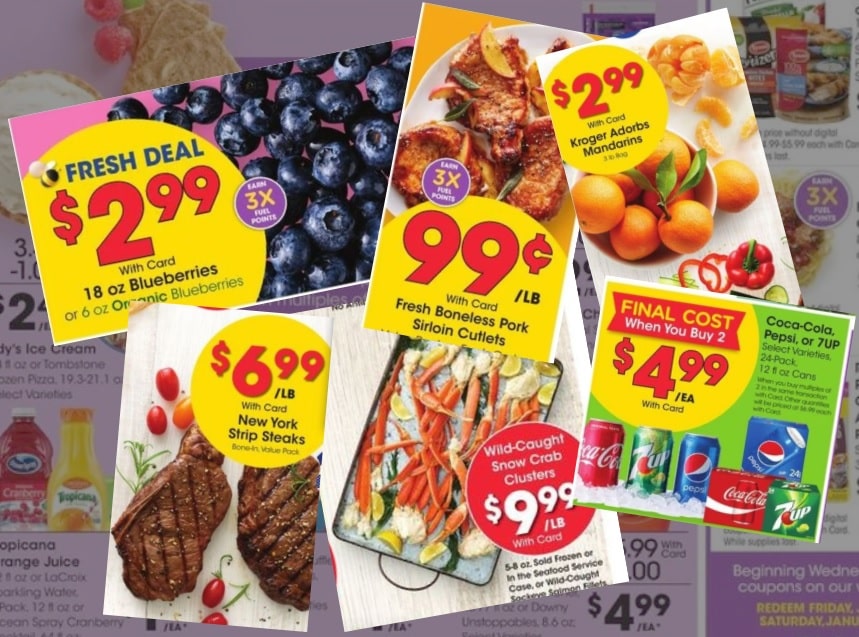
The psychology behind ending prices with 99 cents instead of settling on a whole dollar figure is so well-known, that we’re not even tricked by it. And yet it somehow still works. We know something that costs $1.99 is essentially the same as paying $2, but it still feels cheaper, so we buy it.
But a recent study says the pricing trick may actually work so well, it could play to our advantage and backfire on sellers who use it.
“The Threshold-Crossing Effect: Just-below Pricing Discourages Consumers to Upgrade” describes the phenomenon in a recent issue of the Journal of Consumer Research. Researchers at Ohio State University found that “just-below” prices (set just below a round number) may work so well in convincing us that we’re getting a good deal, that we become unwilling to upgrade to the next most expensive item. The end result is, we save some money and the store loses a potential upsell opportunity.
Picture yourself strolling down the cereal aisle in your local grocery store. One particular brand of cereal costs $3.99. A larger box of the same cereal, or a premium brand of something similar, costs $5.25. Sure, you can do the math and figure out the price per ounce to see which is the better deal. But the researchers argue that more of us are likely to stick with the $3.99 box, because compared to $5.25, it just seems like the better price.
Now what if the smaller box cost $4.00 and the larger box was $5.26? Now the researchers say that larger box is likely to seem not quite so expensive in comparison, even though the price difference is exactly the same.
To test out their hypothesis, they conducted a number of experiments. In one field study, they set up a coffee stand on the Ohio State campus. First, they sold a small coffee for 95 cents and a larger cup for $1.20. Only 29% of customers chose to upgrade to the larger size. So they changed the prices to $1 for the small cup, and $1.25 for the larger size. And 56% of customers upgraded to the larger size.
So the price differential remained the same – the larger cup cost 25 cents more each time – but “we sold more of the large coffee when it was objectively more expensive,” study co-author Selin Malkoc observed. “Increasing prices – from $1.20 to $1.25 – actually increased sales. It is a testament to how strong the effect was.”
There are a number of possible explanations for this consumer behavior, the researchers explained. “Consumers have learned over time that just-below prices, especially 99-ending ones, are associated with sales promotions.” So a just-below price just feels like a good deal, which makes shoppers more wary about upgrading to something that’s likely not to be as good of a deal.
“The other psychological process is the left-digit effect,” the study points out. We read from left to right, so the leftmost digit is what stands out. Even though we know $1.99 is just a penny less than $2.00, if we focus on the leftmost digit, our brains can trick us into thinking it’s a full dollar less.
Therefore, “there is a compelling reason for managers to use just-below pricing, particularly when competing on price,” the study notes. That said, an increasing number of retailers have decided to dispense with all the trickery and go with round-number pricing anyway. Dollar stores do so most famously, charging a dollar or two or three or more for most everything in the store, a longstanding pattern that Dollar Tree broke recently by raising most prices to $1.25. There are also discount stores like Five Below and pOpshelf that price everything in increments of a dollar or more as well.
And the French grocery chain Carrefour Market launched a rounded-off price campaign back in 2013, in which hundreds of sale items were priced at an easy-to-understand one, two, three or more Euros. The goal, Carrefour said, was to “help its customers by offering round prices throughout the year.” And customers apparently liked it, since the campaign continues to this day.
And they may be onto something, if shoppers happily pay the rounded-off prices without feeling like they’re being overcharged. And if it makes them more likely to upgrade to more expensive options, all the better.
Of course, sellers could try to mitigate the effect described by the researchers, by pricing their upgrades at a just-below figure as well. Asking a shopper to upgrade from a $1.99 item to a $2.99 item is less of a leap than asking them to upgrade from $1.99 to $3.00. The key is keeping prices “on the same side of a threshold,” the study’s authors point out, and keeping those leftmost digits as similar as possible.
The bottom line for marketers is that their pricing strategies may need some refinement if they want to encourage shoppers to spend more on more expensive products. The bottom line for consumers, is that we can’t necessarily trust our own instincts about what makes for a good deal. “As consumers, we need to realize that our perceptions are often flawed,” study co-author Selin Malkoc said. “We need to rely on actual numbers and not just our sense of what the numbers are.”
So it pays to know what you’re paying. The dollars may seem most important – but it could be the pennies that ultimately make all the difference.










